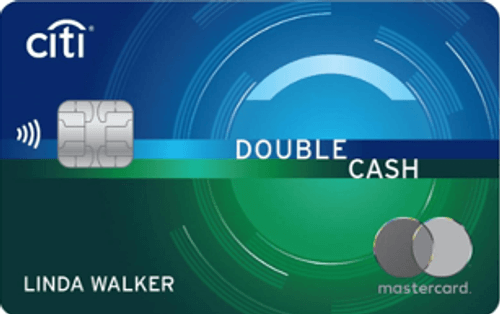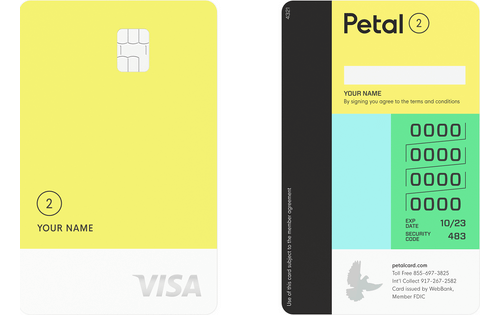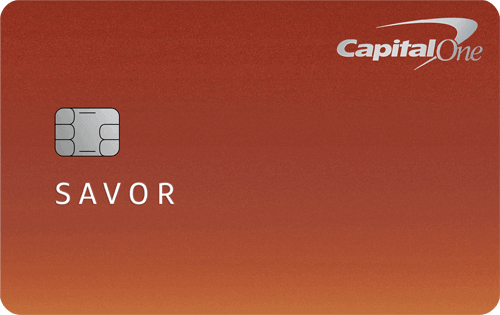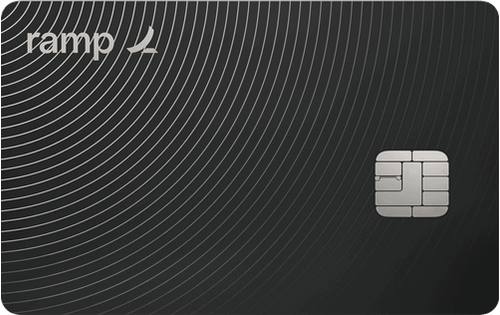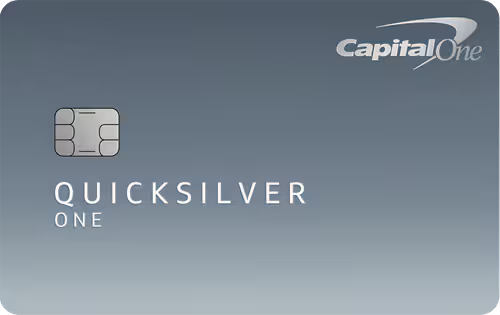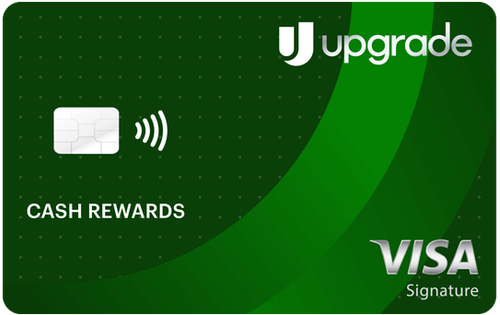- Our picks
- How we picked the best credit cards for fair credit
- Sources
- Beginner’s guide to credit cards for fair credit
- About the author
- User questions & answers
- Expert opinions
Best Credit Cards for Fair Credit Comparison
| Credit Card | Best For | Annual Fee | Editor's Rating |
| Citi Double Cash® Card | Overall | $0 | 5/5 |
| Capital One QuicksilverOne Cash Rewards Credit Card (see Rates & Fees) | Cash Back Rewards | $39 | 4.7/5 |
| Petal® 2 Visa® Credit Card | Average Credit | $0 | 5/5 |
| Upgrade Cash Rewards Visa® | Checking Account bonus | $0 | 4.2/5 |
| Amazon Store Card | Amazon Rewards | $0 | 5/5 |
| Capital One Savor Student Cash Rewards Credit Card (see Rates & Fees) | Student Rewards | $0 | 4.7/5 |
| Ramp Corporate Card | Business Rewards | $0 | 3/5 |
Now that you’re familiar with the best credit cards for fair credit on the market right now, it’s time to pick one. Below, you can check out some pointers for comparing credit card offers for fair credit that will help you select the right card for your particular needs.
Picks by Credit Score
- Best credit cards for 640 credit score
- Best credit cards for 650 credit score
- Best credit cards for 660 credit score
- Best credit cards for 670 credit score
- Best credit cards for 680 credit score
- Best credit cards for 690 credit score
Methodology for Selecting the Best Credit Cards for Fair Credit
To identify the best credit cards for people with fair credit, WalletHub’s editors regularly compare 1,500+ credit card offers based on their approval requirements, fees, rewards, initial bonus, interest rates, and other WalletHub Rating components.
We start by identifying the cards with the lowest annual fees, preferably $0 per year, as it is best to keep costs low while building credit. We then identify the cards with the best rewards, using low APRs as a tiebreaker, because people working to build credit should strive to pay their credit card bill in full every month. Finally, the cards with the lowest two-year cost are selected.
How Two-Year Cost Is Calculated
Two-year cost is used to approximate the monetary value of cards for better comparison and is calculated by combining annual and monthly membership fees over two years, adding any one-time fees or other fees (like balance transfer fees), adding any interest costs, and subtracting rewards. Negative amounts indicate savings. When fees or other terms are presented as a range, we use the midpoint for scoring purposes.
Rewards bonuses and credits have been taken into account for two-year cost calculations. However, bonuses applicable to only a very small portion of cardholders are not considered. For example, credits and bonuses awarded for spending or redeeming rewards through a company portal with non-co-branded cards have not been taken into account. Similarly, bonuses and credits related to spending with specific merchants using a non-co-branded card have not been taken into account (for example, if Card A offers credits with DoorDash, this feature would not be factored into calculations because it is hard to assess how many cardholders would use the benefit or exactly how much value they'd get from it).
Cardholder Spending Profiles
Given that different users have different goals and are likely to use their credit cards differently, we identified spending profiles that are representative of different users’ financial priorities and behaviors. For each cardholder type, we have assumed a specific amount of monthly spending by purchase type (e.g., groceries, gas, etc.), as well as an average balance, balance transfer amount, amount spent on large purchases and average monthly payment. Spending assumptions are based on Bureau of Labor Statistics data for consumers and PEX data for businesses.
Sources
WalletHub actively maintains a database of 1,500+ credit card offers, from which we select the best credit cards for different applicants as well as derive market-wide takeaways and trends. The underlying data is compiled from credit card company websites or provided directly by the credit card issuers. We also leverage data from the Bureau of Labor Statistics to develop cardholder profiles, used to estimate cards’ potential savings.
Beginner’s Guide to Credit Cards for Fair Credit
You can see whether you have fair/average credit by checking your credit score for free right here on WalletHub. You can also learn more about this credit score tier from our guide to fair credit.
For your credit score to benefit, you need to use your credit card responsibly and keep your account in good standing. Most importantly, that means you need to pay your bill on time when you have a balance due. You should also keep your balance well below your spending limit. If you do both, either by making purchases and paying them off or by simply keeping your account open with no balance, you should see your credit score rise over time.
You can keep track of your progress with free credit score updates right here on WalletHub. You’ll also get customized credit improvement advice and access to our credit score simulator tool with your free account.
You just need to fill out the application with some basic personal and financial information, including your Social Security number and annual income. Once you submit the application, you should receive a decision almost instantly. If you’re not approved or denied right away, the issuer may need a few days to confirm some information from your application.
If you are approved, your new credit card should arrive within 7-10 business days. In some cases, you will be able to request expedited delivery or get a card number to use before your physical card arrives.
Learn more about how to get a credit card.
| Category | Secured | Unsecured |
| Minimum Deposit | $200 | $0 |
| Minimum Credit Limit | $200 | $300 |
| Application Fee | $0 | $0 |
| Builds Credit? | Yes | Yes |
| Rewards Available? | Yes | Yes |
Unsecured credit cards are better for people with fair credit than secured cards in most cases. People with fair credit should be able to get approved for a $0 annual fee credit card without placing a security deposit.
On the other hand, secured cards are better for people with limited or bad credit who may have a tougher time qualifying for an inexpensive unsecured card.
Learn more about how secured and unsecured credit cards compare.
Tips for Finding the Best Credit Cards for Fair Credit
Annual fees are the most prominent type of fee to watch out for, but they’re not alone. For example, you might need to consider one-time fees for application processing or transferring a balance, depending on what type of card you’re looking for and how you plan to use it. Your goal should be to minimize the fees that are likely to apply to your usage habits and ignore those that aren’t.
Making this decision early will help make your search more manageable, by cutting your options in half, in addition to helping you get better terms. No single credit card has the best rewards and the best rates, which means you shouldn’t try to use one for both everyday purchases and carrying a balance. Instead, get a rewards card for everyday expenses that you can pay in full within a billing period, a card offering 0% on purchases for big-ticket spending or a 0% balance transfer card for reducing the cost of existing debt. And if you have more than one need, you can get multiple cards and use the Island Approach.
There is a fine line between “fair” credit and “good” credit. In fact, only 40 credit-score points separates the two tiers (fair credit means a credit score of 620 to 659, while good credit is 660 to 719). So if you haven’t checked your credit score in a while, make sure to do so before applying. You might be able to get a better card than you think.
Credit scores can fluctuate by 100 points in a single month, so graduating to a higher credit level doesn’t have to take too long. And that’s great news, considering the best credit card deals require good or excellent credit for approval. So pay your bill on time every month, don’t max out your spending limit and track your credit score’s progress over time to see when you’re ready for an upgrade.
Try to put everything into dollar terms. For rewards cards, that means applying each card’s earnings rates to your actual spending habits in order to determine how much you’re likely to earn over your expected usage timeframe. For 0% cards, it means seeing what monthly debt payments you can comfortably afford to make, how large of a balance you will therefore have remaining at the end of each card’s 0% intro term, and what interest charges you would incur thereafter.
Mistakes to Avoid With Credit Cards for Fair Credit
Two of the biggest mistakes to avoid with credit cards for fair credit are choosing a card that doesn’t save you enough money and not paying your bill by the due date every month. You should pay your bill in full every month to avoid expensive interest charges.
Plus, you don’t want to get bogged down with debt, especially at this point in your credit career. Once you build a good or excellent credit score, you’ll be able to qualify for some of the best 0% credit cards for more cost-effective financing.
Learn more about the biggest credit card mistakes to avoid.
